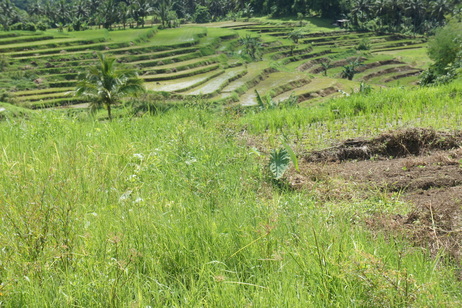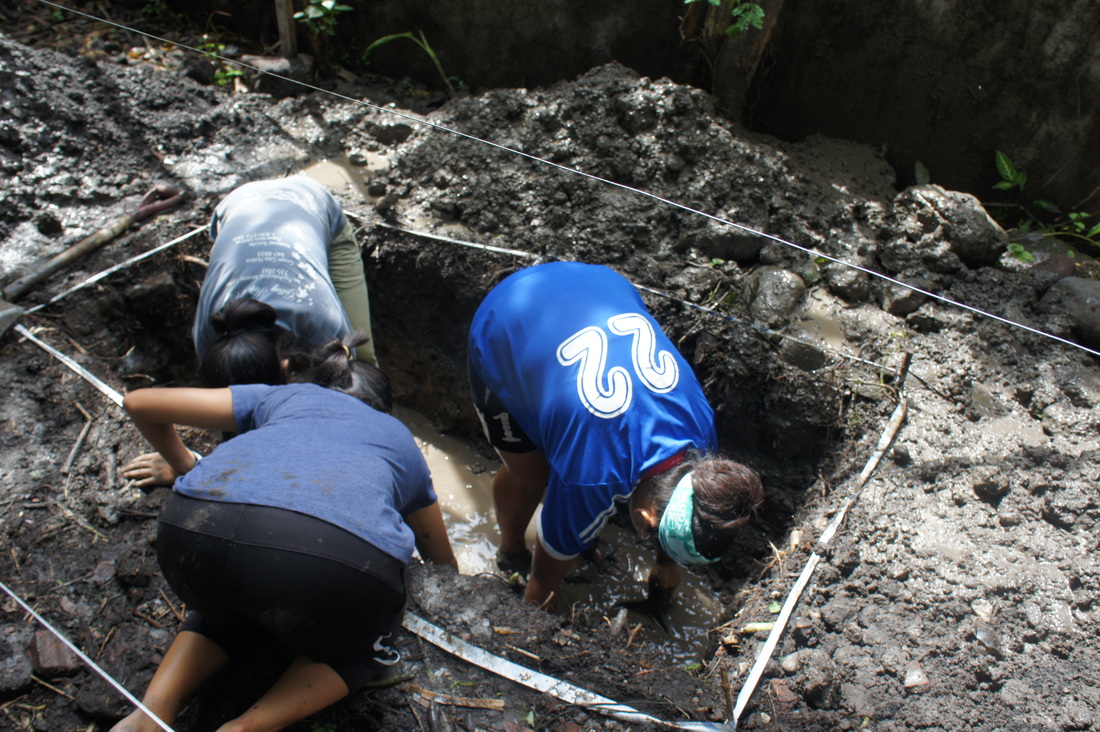Tayabas Archaeological Project

When the Spanish started their search for the Paracale Gold (located in the present day province of Camarines Norte), they encountered a settlement named Tayabas. According to Spanish descriptions, this settlement has a thriving trade connections as well as rice terraces that resemble the agricultural terraces of the Philippine Cordilleras and Bali. The presence of the rice terraces prompted E. Arsenio Manuel, one of the pioneers of Philippine Anthropology, to hypothesize that terraces found in the lowlands are “prototypes” of what we now encounter in the Philippine Cordilleras. While this perspective is yet to be tested, it is clear that when the Spanish encountered the Tayabasin in A.D. 1575, they already mentioned the presence of a terracing tradition.

During the period of July 5-11, an archaeological team conducted a preliminary survey of the rice terraces located in Brgy. Dapdap, Tayabas City. The team conducted pedestrian survey as well as several test trenches in the barangay and in the poblacion. The pedestrian survey discovered a Spanish-era structure about a 100 meters from the old provincial road. Two test trenches were opened in the structure’s vicinity to look into the locale’s stratigraphy. These test trenches indicate that the structure was constructed in a previously cultivated rice field (tubigan).
|
The team also excavated a test trench in the city proper, a few meters away from the Basilica (church) and the old municipal hall (Casa Comunidad). This test trench provided artifacts from pre-Hispanic, Hispanic, and American periods.
Preliminary analysis of materials recovered suggests that Tayabas City was inhabited before the Spanish contact in AD 1575. Earthenware ceramics, recovered within a layer of volcanic tuff, provide proof the existence of a settlement before the Spanish era. A dominance of tradeware ceramics in upper levels also suggests interaction with traders outside of Tayabas.
Information obtained from this initial survey will be used to develop a comprehensive research strategy for a larger Tayabas Archaeological Project. The team hopes to return to Tayabas October 2012.
|
The survey team (Stephen Acabado, Noel Amano, Kate Tantuico, Vanessa Cabrera, Jacy Moore, Charmaine Ledesma, and Raul Ting) wishes to thank Mayor Dondi Silang, Roselle Villaverde, Kap. Felimon Villanueva, Jr., Nanay Dora Villanueva, and the people of Dapdap, Tayabas City, for a wonderful week of hospitality and accommodation.



